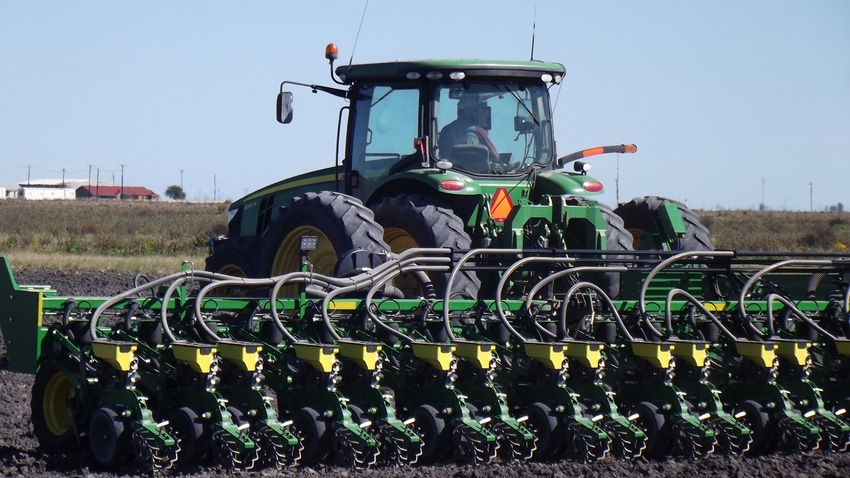February 15, 2017

The Texas Coastal Bend, often referred to as the Texas Riviera, features great beaches, world class salt water fishing, and lots of sports and recreation activities, all under a warm subtropical sun.
But when it comes to agriculture, the region has long been a giant when it comes to crop production. Not too many years ago, in fact, farming and ranching represented the area's number one industry, a major driver of the local economy.
More recently, agriculture has fallen behind as the top economic generator. The development of other industries on the mid-coast, such as oil-related and support industries, chemical plants and refineries, and the growth of the nation's sixth largest port, in terms of dry tonnage, have overshadowed crop and livestock production. But in spite of business and industrial progress and the area's popularity as a growing tourist destination, farming and ranching remain major contributors to the local economy.
In recent years, each February, Texas A&M agricultural Extension agent Jason Ott in Corpus Christi has put together a snapshot of the previous year's farming impact across Nueces County. While the larger Coastal Bend encompasses other counties up and down the mid-coast region, Nueces County is the largest population center and the hub of business activity. While most of the county’s farming operations is limited to commodity crop production on dryland acres, the warm subtropical climate and adequate Gulf moisture make farming both dry and irrigated farm land productive and successful.
Ott says the farming snapshot of the county he pulls together and distributes each year is made up of information gathered mostly from USDA statistics and information and reports from local farmers. Its primary purpose, he says, is to help producers look back over the previous year to determine how each commodity fared for local farmers. Ott explains that mid-winter is when most producers are considering which crops to plant on the acres they own or rent, and looking at last year's numbers gives them a better idea of what worked best, not only on their farm but across the region.
He says in a year when input costs remain a major concern, and low commodity prices are enough to cause ulcers, any information they can get now helps them make better decisions on what to plant.
Because of dry conditions across the county right now, planting the 2017 crop is off to a slow start. Almost all field work has been performed, including tillage and applications of nitrogen and early herbicides, But Ott reports many farmers are waiting to see if rains develop before they actually put seeds into the dry ground. That stands in contrast to the start of planting last year.
LOOKING BACK AT THE NUMBERS
"The 2016 growing season started with very good planting conditions that allowed for good stand establishment. Ample rainfall continued through the early part of the season and left growers with a full moisture profile in June," Ott reports.
But heavy rains last spring caused problems for some growers, like flooding in fields, which caused standing water to destroy some plants in low areas and reduced yields for many that did survive. Some growers replanted after losing much of their young plants, adding to input costs.
But in spite of those challenges, 2016 was a good crop year for most growers across the county. Both grain and cotton yields were strong, and exceeded historic averages, and Ott says it was an exceptional year for corn. In all, Nueces County produced grain sorghum on 150,800 acres with an average yield of 4,800 pounds of grain per acre that generated a crop value of approximately $46 million.
COTTON IS KING ON THE COAST
The county traditionally produces more grain sorghum acres than any other county in Texas, an estimated 14 percent to 15 percent of the state's total. Overall, Texas follows Kansas in grain sorghum production. But in spite of more acres planted in grain sorghum, cotton remained the king of crops in Nueces County. Cotton was produced on about 98,000 acres and at harvest produced an average 880 pounds of lint per acre. The total value of the cotton crop including lint and cottonseed last year was $70.9 million.
In addition, Ott's snapshot indicates Nueces County produced more than 36,000 acres of corn, with an exceptional average yield of 118 bushels per acre, and a crop value of $14 million. Harvested wheat acres totaled around 8,000 acres with yields averaging 35 bushels per acre and an estimated value of $1.2 million. There was also some 900 acres of sesame harvested last year valued at $106 thousand.
Over all, Ott says Nueces County generated an estimated $140.3 million in total agricultural commodity sales in 2016, up from about $113.1 million in 2015.
While no one is speculating how many acres of cotton, corn and grain sorghum will be planted this year, most agree the numbers should equal or be slightly less than were planted last year. How well the year may turn out depends on whether the rains return soon, and to a great degree on trade policy decisions that will be made by the new administration. Both of those issues have farmers concerned. Most, however, say they remain confident farming will survive in the Coastal Bend of Texas.
You May Also Like




